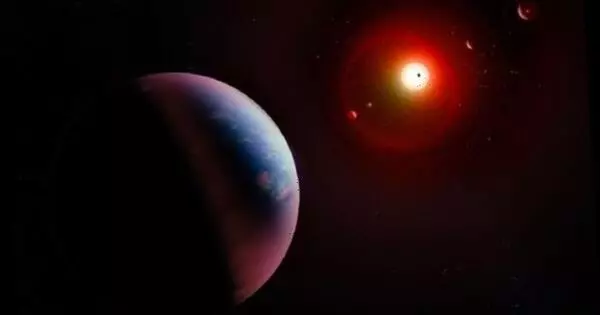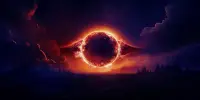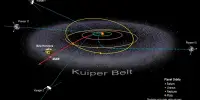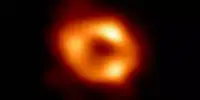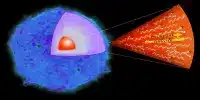The quest for habitable planets, also known as exoplanets with life-supporting conditions, has long been a major focus of scientific research and space exploration endeavors. Astronomers propose a new approach to expanding the search for habitable planets that takes into consideration a previously overlooked zone: the area between the star and what’s known as the soot line in planet-forming disks.
A team of astronomers from the University of Michigan has proposed a novel method for expanding the search for habitable planets that takes into consideration a hitherto unconsidered zone: the area between the star and what is known as the soot line in planet-forming disks.
Worlds that originate in this region – a disk of dust orbiting around a central star from which planets may form – may have surfaces rich in volatile carbon compounds that differ significantly from Earth’s. According to Ted Bergin, who headed the study that comprised geochemists, planetary scientists, astrochemists, and exoplanet experts, these worlds would be rich in organic carbon but deficient in water.
Planets that are born within this region, which exists in every planet-forming disk system, will release more volatile carbon from their mantles. This could readily lead to the natural production of hazes. Such hazes have been observed in the atmospheres of exoplanets and have the potential to change the calculus for what we consider habitable worlds.
Ted Bergin
When looking for Earth-like planets, we are particularly interested not just in bodies that resemble our own, but also in those that were generated through processes comparable to our own. Current models of rocky exoplanets are based on Earth-like atmospheric conditions and bulk composition, which includes the molecules required for life, which are formed from carbon-based building blocks and water. These models also focus on zones within planet-forming disks called ice lines, regions distant enough from the disk’s center star which mark where water or other key molecules transition from gas to solid phases.
Terrestrial worlds, like our own, are made up of solids. It has long been assumed that Earth, which contains just around 0.1% water by mass, must have formed inside the water-ice boundary.
However, Bergin believes that such a model may be too limiting. Bergin and his colleagues propose a new model that takes into account the soot line, a barrier closer to the solar system’s star, to broaden the hunt for habitable planets. Organic chemicals in solids sublimate out of the solid into gas between this border and the star. Given that this zone would also include rocky worlds with more carbon than Earth, problems about habitability in these types of planets arise.
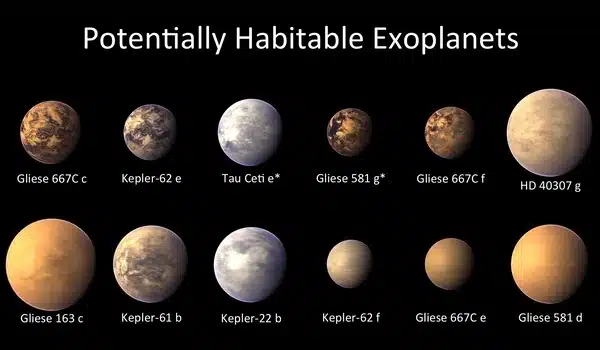
The findings by the interdisciplinary research team are published in Astrophysical Journal Letters. “It adds a new dimension in our search for habitability. It may be a negative dimension or it may be a positive dimension,” Bergin said. “It’s exciting because it leads to all kinds of endless possibilities.”
According to Bergin, the Earth is deficient in both water and carbon. It most likely received only one carbon atom out of every 100 available in planet-forming ingredients when it formed. The soot line, according to astronomers, explains why Earth has so little carbon. If Earth’s building blocks formed inside the soot line, the temperature and solar radiation blasted the components that would form the newborn planet, converting carbon-rich molecules to gas and limiting carbon in the solids provided to the nascent Earth.
The team’s model speculates on the birth of new planets between the soot line and the water-ice line.
Such a world does not appear to exist in our solar system, but our solar system does not reflect the majority of known planetary systems surrounding other stars, according to Bergin. These other planetary systems appear to be entirely distinct. Their planets are far closer to the sun and much larger, ranging in size from super-Earths to mini-Neptunes, he explained.
“These are either big rocks or small gas giants – that’s the most common type of planetary system. So maybe, within all those other solar systems out in the Milky Way galaxy, there exists a population of bodies that we haven’t recognized before that have much more carbon in their interiors. What are the consequences of that?” Bergin said. “What this means for habitability needs to be explored.”
The team studies what happens in the soot line region when a silicate-rich Earth with 0.1% to 1% carbon by mass and variable water content emerges. They discovered that such a planet would generate a methane-rich atmosphere via a process known as outgassing. Organic components in a silicate-rich planet form a methane-rich atmosphere in this case.
The presence of methane creates an ideal environment for the formation of hazes as a result of interactions with stellar photons. This is akin to the formation of hazes from methane in our own solar system’s Titan.
“Planets that are born within this region, which exists in every planet-forming disk system, will release more volatile carbon from their mantles,” Bergin said. “This could readily lead to the natural production of hazes. Such hazes have been observed in the atmospheres of exoplanets and have the potential to change the calculus for what we consider habitable worlds.”
The presence of haze around a planet could indicate that the planet’s mantle contains volatile carbon. And more carbon, the building block of life, in a planet’s mantle suggests the planet has a chance to be considered livable – or at least warrants a second look, according to Bergin.
“If this is true, then there could be a common class of haze planets with abundant volatile carbon, and what that means for habitability needs to be explored,” he stated. “But there’s another possibility: What if you have an Earth-sized world with more carbon than Earth? What does this signify in terms of habitability, of life? We don’t know, which is thrilling.”
